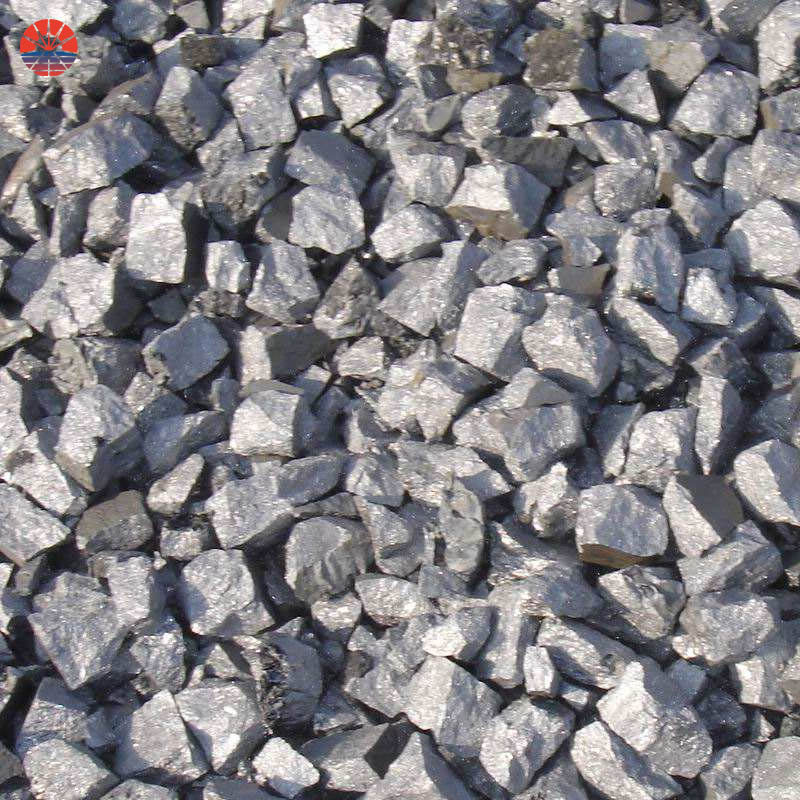What's The Benefit To Using Ferrosilicon In Ferroalloy Production
The use of ferrosilicon in ferroalloy production offers several significant benefits due to its unique properties and ability to serve as a source of silicon. Here are some key advantages of using ferrosilicon in ferroalloy production:
Silicon content: Ferrosilicon contains a high percentage of silicon, typically ranging from 15% to 90% depending on the specific grade. Silicon is a valuable alloying element in various ferroalloys, as it imparts desirable properties to the final products. For example, silicon can enhance the strength, hardness, and corrosion resistance of steel and other alloys.
Deoxidation and reduction: Ferrosilicon acts as a deoxidizer and a reducing agent in ferroalloy production. It helps remove oxygen from the metal, ensuring the alloy's quality and reducing the risk of defects in the final product. The silicon in ferrosilicon readily reacts with oxygen, forming slag and carbon monoxide, which is essential in controlling the alloy's composition.
Alloy customization: The silicon content in ferrosilicon can be adjusted to meet specific requirements for different ferroalloys. Manufacturers can choose from various grades of ferrosilicon to tailor the alloy's composition and properties, ensuring the ferroalloy precisely meets the desired application needs.
Cost-effectiveness: Ferrosilicon is generally more cost-effective compared to pure silicon, which makes it an attractive choice for adding silicon to ferroalloys. The use of ferrosilicon enables the production of high-quality ferroalloys at a relatively lower cost.
Process stability: The addition of ferrosilicon to the production process can help stabilize the reaction and ensure consistent results. Its reliable performance as a reducing agent and alloying element contributes to smooth and efficient ferroalloy production.
Wide application range: Ferrosilicon is a versatile material used in the production of various ferroalloys, such as ferromanganese, ferrochrome, silicomanganese, and others. Its ability to enhance different properties of alloys allows for its application in diverse industries, including steelmaking, foundry, and metallurgy.
Controlled silicon release: Ferrosilicon releases silicon gradually during the alloying process, providing better control over the alloy's composition and preventing potential issues associated with the rapid addition of pure silicon.
Overall, the use of ferrosilicon in ferroalloy production enables manufacturers to achieve consistent and controlled alloy compositions, resulting in high-quality ferroalloys with enhanced mechanical and metallurgical properties. Its role as a source of silicon and a reducing agent makes it an indispensable component in various ferroalloy production processes.
What's The Ferrosilicon Usage In Ferroalloy Production
In ferroalloy production, ferrosilicon serves as a critical raw material and plays a significant role in the manufacturing of various other ferroalloys. Ferroalloys are alloys composed primarily of iron and one or more other elements, such as silicon, manganese, chromium, or others. Each ferroalloy has distinct properties and is used for specific applications in the metallurgical and steel industries. Here are some key ways in which ferrosilicon is used in ferroalloy production:
Ferromanganese production: Ferromanganese is an alloy containing iron and manganese, and it is commonly used as an additive in steelmaking to improve steel properties. Ferrosilicon is an essential component in the production of ferromanganese. It is added to the mixture of manganese ore, iron ore, and carbon during the smelting process to reduce manganese oxide to metallic manganese and form ferromanganese alloy.
Ferrochrome production: Ferrochrome is an alloy composed of iron, chromium, and sometimes other elements. It is mainly used in stainless steel production to enhance the steel's corrosion resistance and high-temperature strength. Ferrosilicon is used as a reducing agent in the production of ferrochrome. It facilitates the reduction of chromium oxide in the chromite ore to produce ferrochrome.
Silicon manganese production: Silicon manganese, also known as ferrosilicon manganese, is an alloy containing iron, manganese, and silicon. It is used as a deoxidizer and alloying agent in steelmaking. Ferrosilicon is one of the key components in the production of silicon manganese. It provides the necessary silicon content to the alloy, which improves the steel's strength and deoxidizing properties.
Ferrosilicon production: Ferrosilicon itself is considered a ferroalloy, and its production involves the carbothermic reduction of silica and iron sources, as mentioned in the previous responses. The ferrosilicon produced serves as a vital additive in steelmaking and foundry applications.
The use of ferrosilicon in the production of other ferroalloys allows manufacturers to control and customize the composition of these alloys to meet specific industrial needs. By adjusting the proportions of ferrosilicon and other elements, ferroalloy producers can tailor the properties of the final alloys, making them suitable for various applications in the steel industry, as well as in the production of non-ferrous metals and other specialty materials.
Specification
Quality inspection certificate of finished product | |||
Product name | Ferro Silicon | Batch No. | ZC2023-06-13 |
Sampling Site | / | Product specifications | / |
Acceptance date | 2023.06.13 | Report date | 2023.06.14 |
Test items | SH/T 0313-92 | Test results | |
Appearance | This product should be black solid | ||
Si | 75.32 | ||
c | 0.11 | ||
P | 0.03 | ||
s | 0.014 | ||
A1 | 0.77 | ||
Conclusion | Product conforms to specification. | ||








